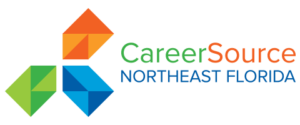The Nursing Shortage Shows Why Industries Must Choose Tech Carefully (Courtesy MIT Sloan Management) — More than two years into the pandemic, depleted health care workers have been pushed to their limits. In the U.S., we’re experiencing what Becker’s Hospital Review has described as “an unprecedented nursing shortage.” Overworked and risking their own health — both physical and mental — to provide care throughout multiple surges of COVID-19, nurses are in crisis. Many are leaving the profession — and the problem is global.
The shortage is expected to worsen in the coming years, as baby boomers age and require more care — a scenario that could put many lives at risk: Research shows that hospitals with higher patient-to-nurse ratios see higher mortality and failure-to-rescue rates.
Much of the recent discussion about the shortage has focused on how to attract more nurses, such as by offering more pay and benefits. In the age of the Great Resignation, making jobs more appealing is something many industries are looking to do. But while this is crucial, it’s only part of the solution.
Another important step is to determine how new technology can help nurses and other health care workers get their jobs done and improve their day-to-day work lives. Robotics, machine learning, and AI can often take over certain tasks — ones that have high potential for automation and are less dependent on human interaction. This allows workers to focus on those human-oriented tasks that machines are less suited for, resulting in greater productivity from a smaller staff. But leaders must first understand what types of tasks each job consists of.
Researchers have studied how nurses spend their time during a work shift. Because there is so much multitasking in the profession, it’s difficult to produce definitive figures. But studies have found that nurses spend between 26% and 41% of their time on documentation activities, a major source of what burdens them.
This is partly a case of otherwise helpful technology making someone’s work harder. Electronic health records and health care IT have made patient information more organized and readily available. But the need to input loads of information about each patient into a computer has also increased nurses’ time spent on documentation by an estimated 22% to 46%.
It’s a crucial lesson for all industries, not just health care. New technologies can bring a host of benefits and efficiencies, but it’s important to gauge their effect on the daily work lives of those who use them the most.
Tech to Help, Not Replace
My team, based in Palo Alto, California, works with all parts of the health care system to help automate workflows and deliver superior outcomes for patients. We dug into the research surrounding time use at hospitals and, as part of that, met with many health care staff members to better understand their frustration points. We found that nurses are often called on to go digging through patient histories, charts, and reports to find information to help complete paperwork.
One solution for relieving the documentation burden involves natural language processing, in which machines can learn to “understand” medical concepts and terminology. By combining this with AI and embedding the technology into electronic health records, we’ve found that it’s possible for information to be automatically retrieved from electronic health records in seconds, without requiring extra manual work on the part of nurses.
We’re also combining real-time information gathered about patients — their lab results, health histories, and more — to help nurses see who is at highest and lowest risk. (Such technologies are sometimes called predictive algorithms.) These tools fall under the category of robotic process automation, which is about automating certain human activities, and can be useful to virtually any industry.
A whole new world of technology is available. Some hospitals are beginning to use “telesitters,” which can keep an eye on the movements of patients who may be at risk of falling or self-harm and alert staff members if there’s a problem. Of course, these technologies introduce patient privacy concerns that must be taken into consideration. Hospitals are also investing in telemedicine and remote patient monitoring to help care for patients outside of hospitals.
All of these solutions can help free up hospital nurses to spend more time doing what they’re needed for most: providing human care for patients.
Incorporating End Users Into Design
As hospitals look at potential technologies to help nurses, there are two crucial rules to keep in mind that are applicable to any industry.
First, consult the end users in creating solutions. According to a study conducted by two registered nurses, the pandemic has shown “the urgent need for nurses to become involved in technology design, acquisition, and implementation.” Some technologies that were already introduced in hospitals before the pandemic were difficult or onerous to use, making tasks more difficult.
There’s no greater source of information than the people who will use the technology. As PwC has noted, it’s crucial to get continual feedback from employees when designing any new system.
Second, give staff members paid time to learn to use any new system. A quick demonstration is often not enough. Researchers have found that providing development opportunities for nurses to gain digital proficiency makes a big difference in the success of technological changes inside hospitals.
At a time when many workers are feeling misunderstood by their employers and are struggling to get necessary work done, forward-thinking organizations have an opportunity. They can listen to staff members, explore technological solutions, and work to transform operations in a way that works for everyone. That will build a stronger, healthier future.
